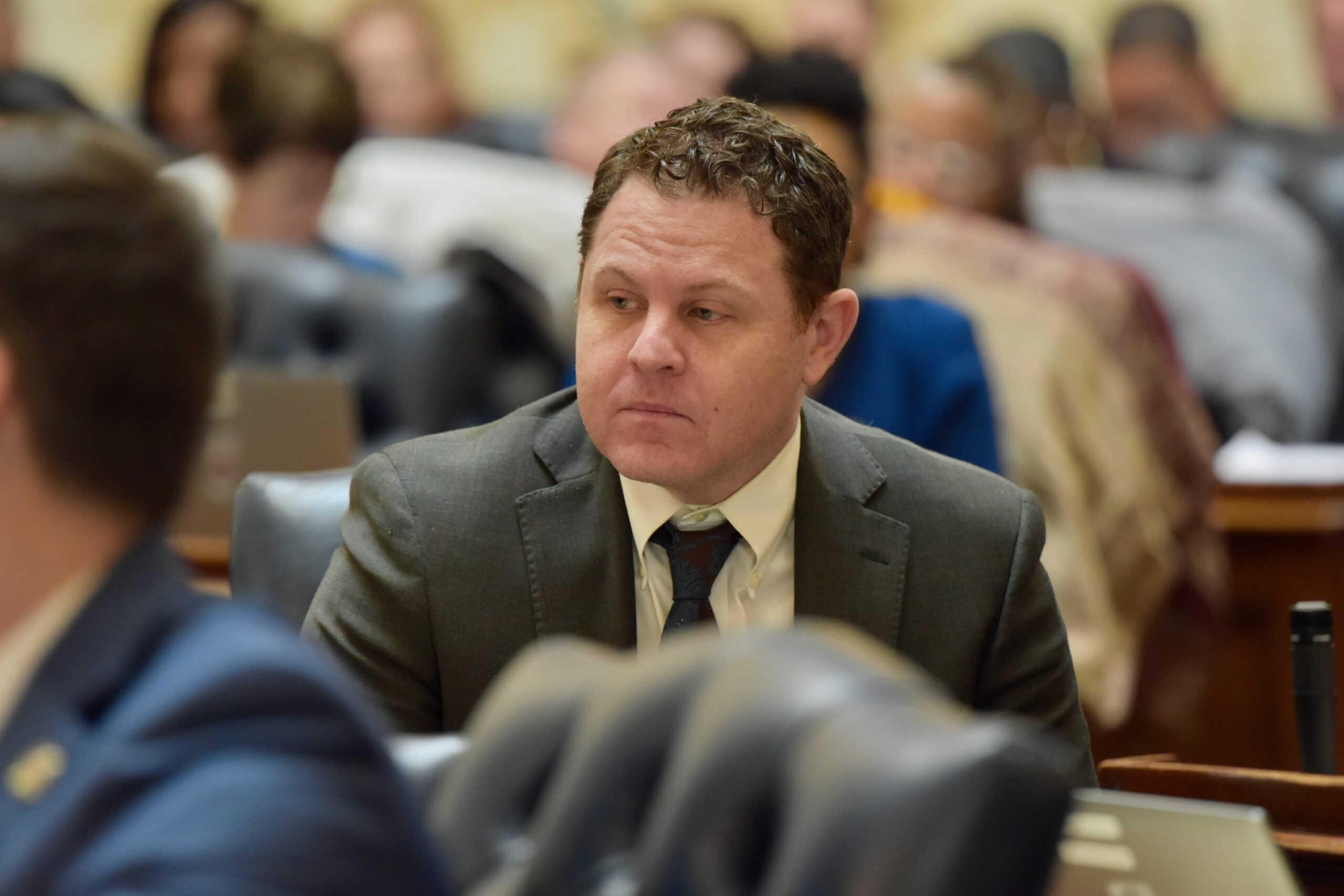Plan for Flood-Ravaged Ellicott City Seeks to Balance Environment, Business, History

Four years after the first of two major floods hit Ellicott City, its historic county seat, taking two lives and devastating many businesses and buildings along Main Street, Howard County released a long-awaited draft Watershed Master Plan this week.
The document includes recommendations for flood mitigation, economic development, environmental sustainability, transportation and preserving the town’s historic character over the next 20 years through “many different capital budget cycles,” Kate Bolinger, a community planner in the Howard County Department of Planning and Zoning, said in an email. Flood mitigation projects will get priority in the current budget, she said.
“This master plan provides a long-term vision for a thriving Ellicott City that showcases the community — its people, commerce, history, culture and natural environment,” County Executive Calvin Ball (D) said in a statement.
Ellicott City sits in an extremely vulnerable spot, at the bottom of a slope where multiple streams converge. This topography helped make Ellicott City one of the largest milling and manufacturing towns on the East Coast, but also made it vulnerable to a series of ravaging floods, going back to 1768.
The county began its master plan process in 2017 and incorporated a watershed plan in response to the 2016 flood, when six inches of rain fell in less than two hours and claimed two lives.
Amid planning in 2018, another storm dumped six inches in three hours on Ellicott City, causing another calamitous flood. Then the priority shifted to developing a flood mitigation plan as quickly as possible, and the master plan process was put on pause.
When Ball took office in November 2018, he began the EC Safe & Sound Plan, a multi-phase proposal to advance flood mitigation projects and support local business and property owners.
State Sen. Katie Fry Hester (D-Carroll & Howard) and Del. Courtney Watson (D-Howard) secured $8.25 million from the state to support the Safe & Sound plan this year.
In 2019, Ball mandated a new stormwater management standard for developers in the Tiber Branch Watershed. New and existing developers must now manage the hydraulic equivalent of the July 30, 2016 flash flood, which more generally means controlling the peak flow and intensity of stormwater.
The 121-page Watershed Master draft plan builds on Ball’s Safe & Sound plan and includes a series of recommendations that centers around Ellicott City’s “core,” the area most affected by floods, which includes Main Street, the West End neighborhood and the watershed.
“Considering that more than 600 comments were submitted and 7 public meetings were held prior to the draft being released, the draft encompasses the needs of both the residents and businesses of Ellicott City and the West End,” Watson said in an email.
Included is an illustration of four “dry flood mitigation facilities and one expanded detention facility,” which are also called “dry ponds” because they are designed to hold water for a short period of time before allowing the water to discharge to a nearby stream, Bolinger said. It will be important to frequently inspect and manage the woody growth around these dry ponds after they get built, the draft states.
Managing stream debris, such as fallen trees and boulders, is also important, as they can get into water channels and hinder floodwaters. The draft plan includes installing debris snags, which are vertical posts used to catch large woody debris before it can create blockage, at the junction of the New Cut and Tiber Branches.

Howard County Executive Calvin Ball (D) talks to a news crew after attending a grand opening celebration last year for Vintage Chic, a new business in the historic Ellicott City district that has been ravaged by deadly floods in 2016 and 2018. Photo by Danielle E. Gaines
To help spur economic development, the county plans to continue business support programs with the Maryland Small Business Development Center through Ellicott City Partnership, a non-profit that helps bring business into the town, and the Howard County Economic Development Authority, a public-private partnership that promotes economic growth in the county. These organizations have provided guidance to Ellicott City’s businesses about merchandising, marketing and cash flow after the first flood.
Mojan Bagha, the owner of Main Street Oriental Rugs, has been selling hand-crafted rugs in Ellicott City since 1997 and experienced all of its floods since.
“Unfortunately, the cost of operation and insurance has gone extremely up. It is very expensive to operate a business in Ellicott City and traffic has decreased,” he said. “Ellicott City is no longer the same Ellicott City.”
The draft plan includes recommendations to attract more traffic into town, such as creating an annual events calendar and building a tourist train service from the B&O Station Museum in Ellicott City to the B&O Railroad Museum in Baltimore to highlight the Patapsco Valley’s role in the history of U.S. railroads.
Bagha’s rugs were heavily damaged after the floods, and he spent days cleaning them.
He said that he received business consultation from the city after the floods and appreciated how both the County Council and community members did their best to help Main Street businesses. But what would be more helpful, Bagha said, is to change the zoning laws so that more stores could open on top of the hill further up the street, near Mount Ida, a historic home in Ellicott City.
To improve local water quality, the drafters recommend installing more green roofs, rain gardens and permeable paving within parking lots and gathering areas. Parking lots within the Patapsco River floodplain are suitable for permeable paving, the draft says.
Bagha stressed that the floods and damages to businesses in Ellicott City were not unique. “These issues need to be addressed internationally, and it has to do with climate change,” he said. “We have to adapt to the environment.”
Any long-term planning will also have to be highly sensitive to the town’s historical significance, Bolinger said in a virtual news conference. A big part of Ellicott City’s economic success comes from its attractive historic buildings and culture, and many community members recognize this, she said.
The town’s historic preservation contributed $197 million in business activity and 1,400 jobs, according to the draft.
“Preservation requires that owners in the historic district participate in a review and approval process to alter the exterior appearance of their property. Materials approved for repairs are limited to those that are historically compatible,” Bolinger said in an email. However, such repairs can qualify for a tax credit to help offset the additional cost of historically appropriate materials.
The public will be allowed to comment on this draft report through Aug. 22. The Planning Board and County Council will review public comments and the draft plan as part of the legislative process in the fall.





 Creative Commons Attribution
Creative Commons Attribution